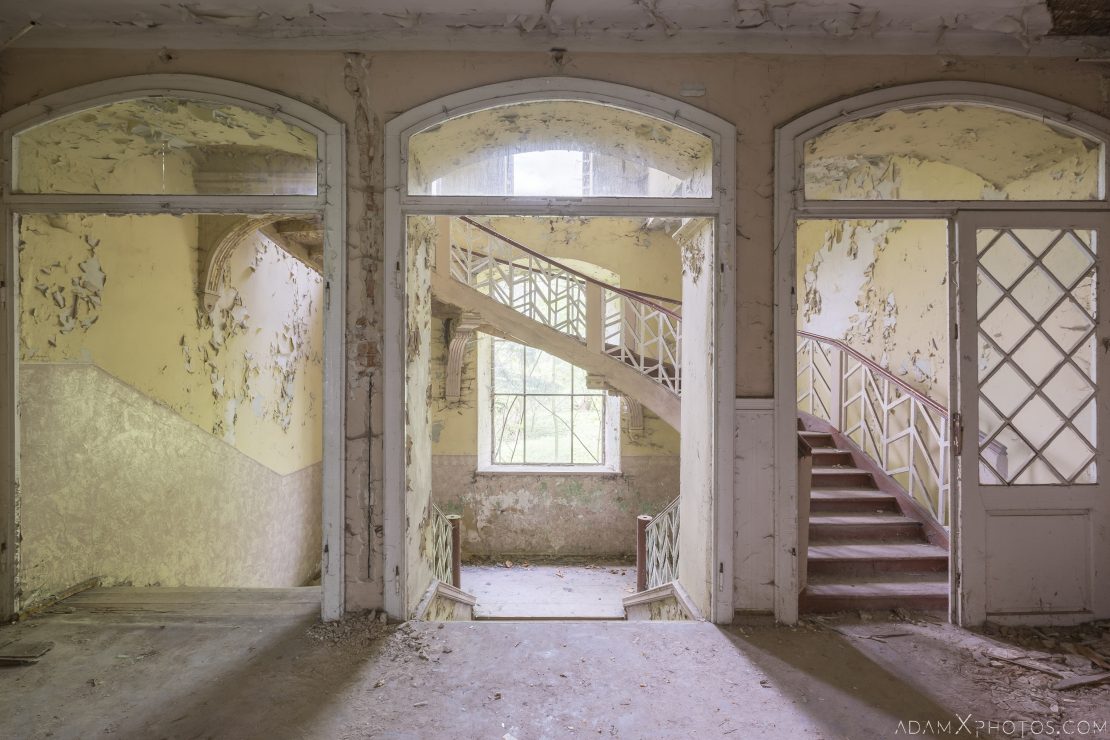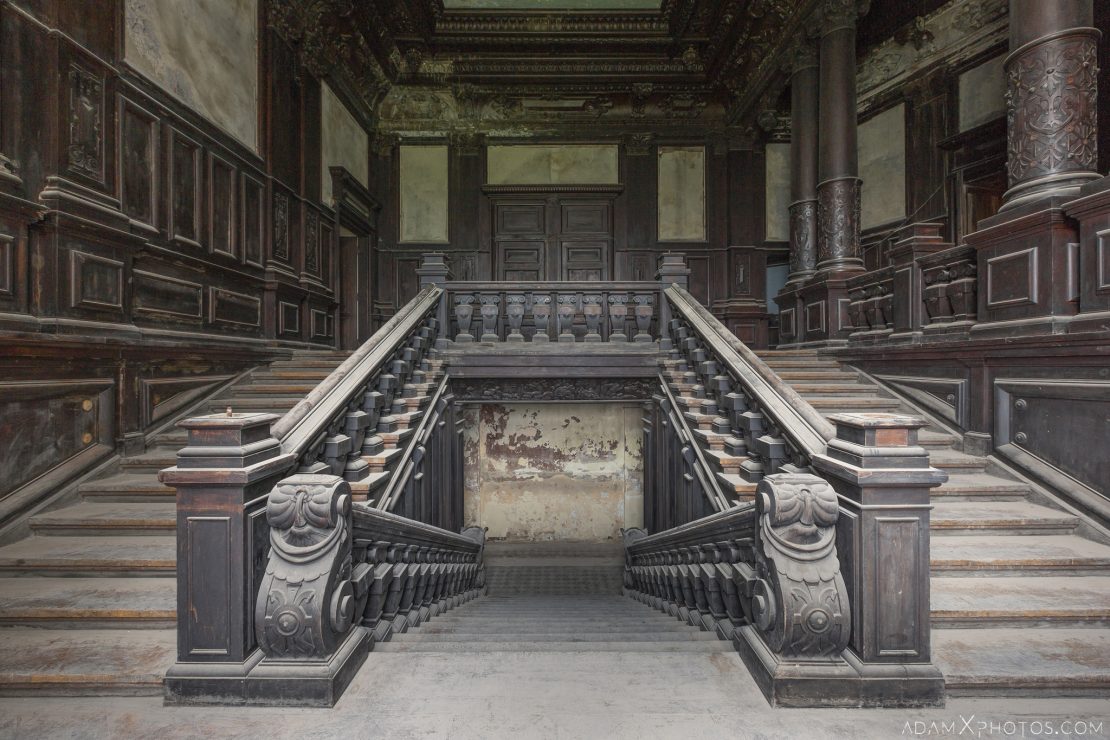Explore #176: Villa ‘Nice Stairs’, Poland – May 2016
Explore #16 of ‘The Picnics & Palaces Tour’ Next up was a quick stopover at this large abandoned house, now lost in overgrown woodland. Click on any photo to OPEN LIGHTBOX AND VIEW LARGE We picked our way through the undergrowth to the front of the property… Straining to get the full sweep of the staircase within a single shot, I crammed myself into a dust and cobweb-filled corner, crumbling paint and plaster falling off the wall down the back…


